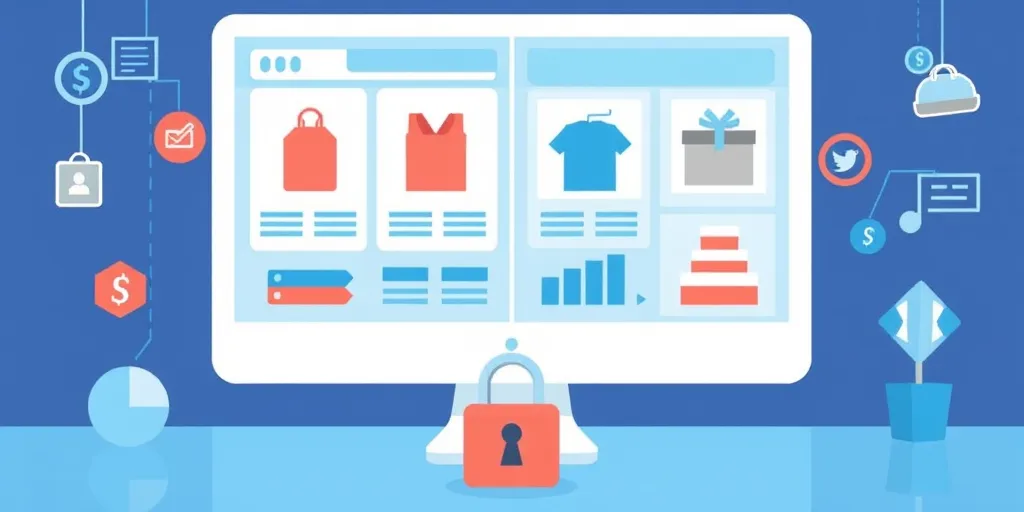Introduction
In the bustling world of online retail, personalization isn’t just a luxury—it’s a necessity. With consumers drowning in a sea of choices, making your eCommerce store stand out requires a touch of personal care that only personalization can provide. Let’s dive into how small business owners can harness the power of ecommerce personalization strategies to skyrocket sales and build lasting customer loyalty.

Understanding Ecommerce Personalization Strategies
eCommerce personalization is the art of tailoring the shopping experience to individual customers based on their behaviors, preferences, and past interactions. It transforms a generic shopping journey into a bespoke adventure, making each customer feel understood and valued.
Why Personalization Works
At its core, personalization taps into the human desire for recognition and relevance. When customers see products and offers that align with their interests, they’re more engaged, more likely to make a purchase, and more likely to return.
Data Collection and Analysis: The Backbone of Personalization
The first step towards personalization is gathering data. This includes tracking browsing habits, purchase history, and engagement across your platforms (website, mobile app, blog, etc.). But remember, transparency and respect for customer privacy are paramount. Always ensure your data collection methods are compliant with regulations like GDPR. Here you find an official document detailing what is personal data.
Transforming Data into Strategy
With a wealth of data at your fingertips, analyze patterns to predict future buying behavior. Tools like Google Analytics and CRM systems can help you segment your audience and tailor your marketing efforts.
Implementing Personalization Strategies
Implementing effective ecommerce personalization strategies requires a deep understanding of your customer’s desires. Now, let’s put that data to work by implementing strategies that speak directly to your customer.
Personalized Product Recommendations
Utilize algorithms to show items that match the customer’s interest, wishlist, shopping cart content, significantly enhancing the chance of a sale. Build your cross-sales and up-sales strategies based on this and your customers will likely see items and products that are close to their interests.
Customized Emails
Send emails that resonate with where your customer is in the buying journey. Abandoned cart reminders, product recommendations, and personalized discounts can turn browsers into buyers. A well-defined customized email could be a Happy Birthday Discount for example. I’m pretty sure everyone loves those.
Social Media Engagement
Create targeted ads and content for social platforms where your customers spend their time. Engagement here can lead to direct sales on your site.
Tools you should use for eCommerce Personalization
Several tools can help you automate and refine the personalization process:
- CRM Software: For managing customer data and insights.
- AI-powered Recommendation Engines: To suggest products dynamically.
- Email Marketing Tools: For sending targeted messages based on customer behavior.
Top personalization tools used by major eCommerce players
To effectively implement personalization strategies in your eCommerce business, consider utilizing these powerful tools:
- Adobe Experience Cloud: Offers comprehensive solutions for data management, content creation, and marketing automation, enabling real-time personalized customer experiences.
- Salesforce Commerce Cloud: Provides AI-driven personalization for shopping experiences, optimizing customer interactions across channels.
- Optimizely: A platform for experimentation and personalization, allowing businesses to test and tailor experiences to improve engagement and conversion rates.
- Segment: Facilitates the collection, unification, and analysis of customer data to enable personalized marketing campaigns and product recommendations.
- Dynamic Yield: Uses AI to offer personalized product recommendations, content, and offers across web, mobile, and email channels.
These tools vary in functionality, from data analytics to content management systems and marketing automation, catering to different aspects of personalization in the eCommerce journey.
Measuring the Impact of Personalization
It’s crucial to track the effectiveness of your personalization efforts. Monitor metrics like conversion rates, average order value, and customer retention rates to understand what’s working and what needs tweaking.
Best Practices and Common Pitfalls
Do’s:
- Start small and scale your efforts as you learn what resonates with your customers.
- Continuously test and refine your strategies based on performance data.
Don’ts:
- Overwhelm customers with too much personalization too soon.
- Neglect privacy concerns and data protection regulations.
The below case studies will illustrate the successful implementation of ecommerce personalization strategies.
Case Studies
If you want to have a successful strategy, you don’t need to re-invent anything, you just have to look to successful businesses that have implemented personalization effectively. Analyze their strategies, the tools they used, and the outcomes of their efforts for real-world inspiration.
During my nearly eight years at Nespresso, I witnessed firsthand the monumental effort it took to revolutionize our approach to customer experience through personalization.
Nespresso has embraced a next-generation marketing platform to achieve 1:1 personalization in real time across all important channels. This approach is facilitated by integrating over 150 different applications and data sources, enabling Nespresso to build a true 360-degree real-time customer profile. This strategy not only enhances customer retention by offering personalized experiences but also effectively bridges the gap between online and offline sales channels, thereby enhancing up-sales and cross-sales. Nespresso’s use of Adobe’s technology showcases how to prioritize customer experience, ensuring seamless interactions whether online or in-store.
Conclusion
eCommerce personalization is more than a trend; it’s a transformational strategy that can lead to significant business growth. By understanding your customers and tailoring their shopping experience, you create a path to not just a sale, but a relationship.
Continuous improvement and adaptation to your customers’ evolving needs will keep your sales growing and your brand strong.
Call to Action
Embark on the transformative journey of eCommerce personalization today. Begin by meticulously reviewing your customer data to uncover valuable insights. Select a personalization strategy that resonates with your brand and your audience’s unique needs. Implement this strategy and observe as your eCommerce store cultivates deeper, more meaningful connections with your customers.
Remember, the path to personalization is ongoing and ever-evolving. It’s about consistently adapting and refining your strategies to meet and exceed the changing desires of your customers. This journey is pivotal to not just securing a sale, but to building lasting relationships and a loyal customer base. You would always consider the basics first, like the business model you need to follow. Follow the rabbit to read more about What are the four main types of E-Business Models?
With years of experience in the field, I’m here to guide you through every step of this exciting process. Whether you’re looking for advice on where to start or need assistance in refining your current personalization strategies, I’m ready to help. Feel free to hire me as your eBusiness consultant, SEO auditor or web developer. You can reach out through my contact form for personalized guidance tailored to your business needs. Let’s unlock the full potential of your eCommerce store together.



2 comments on “Maximize Profits: Insider Tips on eCommerce Personalization Strategies”